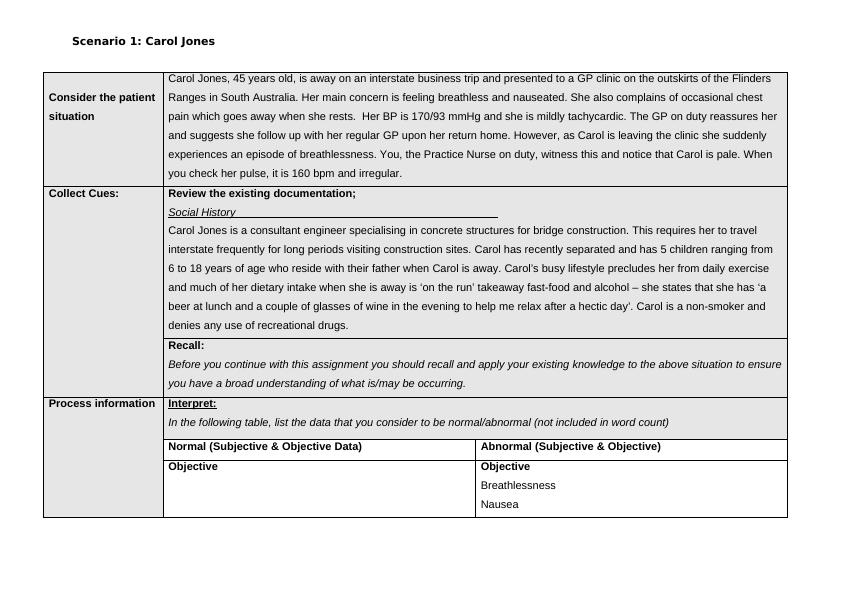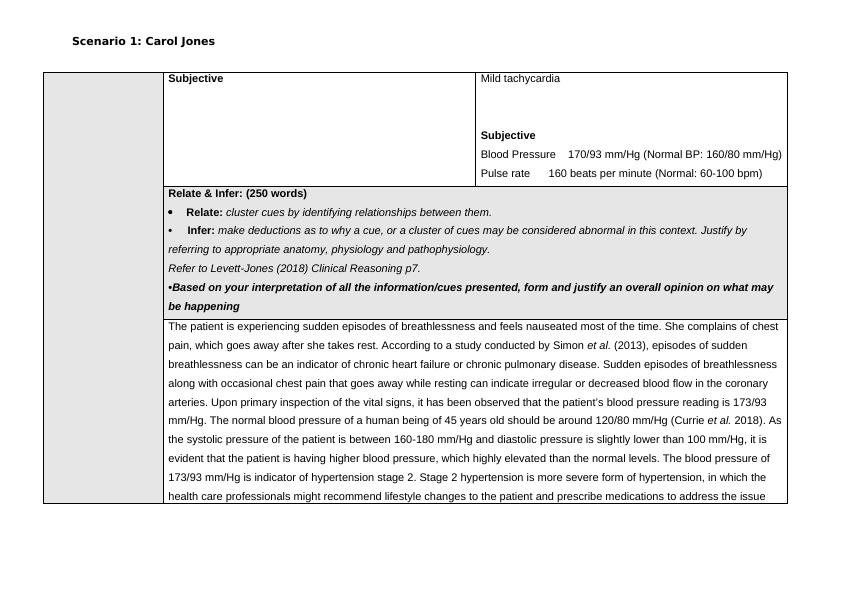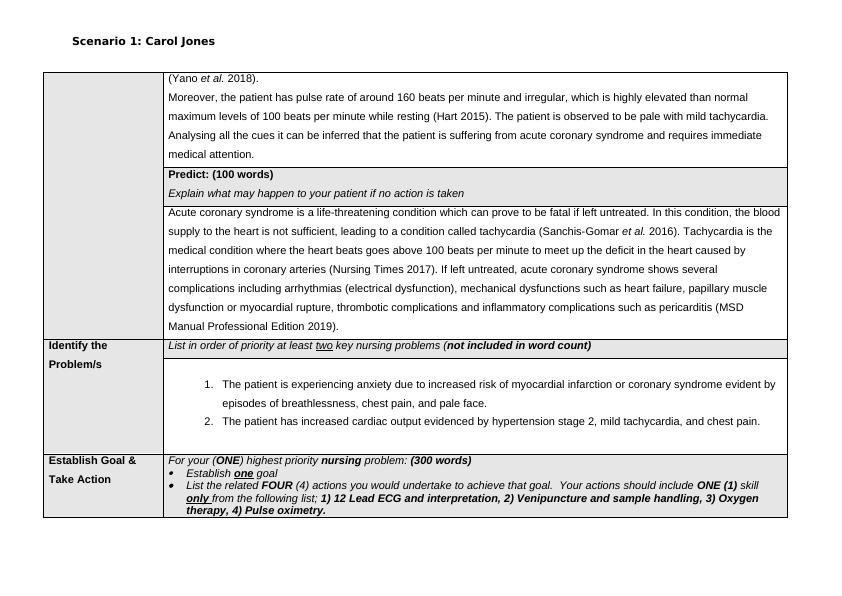Assignment on Carol Jones - Consider the patient situation
This assignment requires students to develop a nursing care plan using the clinical reasoning cycle and to assess and reflect on their skills based on evidence. The assignment has two parts: developing a care plan and conducting a skill assessment and reflection.
9 Pages2825 Words22 Views
Added on 2022-08-25
Assignment on Carol Jones - Consider the patient situation
This assignment requires students to develop a nursing care plan using the clinical reasoning cycle and to assess and reflect on their skills based on evidence. The assignment has two parts: developing a care plan and conducting a skill assessment and reflection.
Added on 2022-08-25
ShareRelated Documents
End of preview
Want to access all the pages? Upload your documents or become a member.
New England Journal of Medicines
|8
|2588
|17
Case Study Essay Template: Analyzing a Patient's Symptoms and Vital Signs for Diagnosis
|11
|2749
|344
Developing a Nursing Problem
|8
|2045
|496
Developing a Nursing Problem
|8
|1992
|82
Professional Practice : Assignment
|8
|2356
|333



